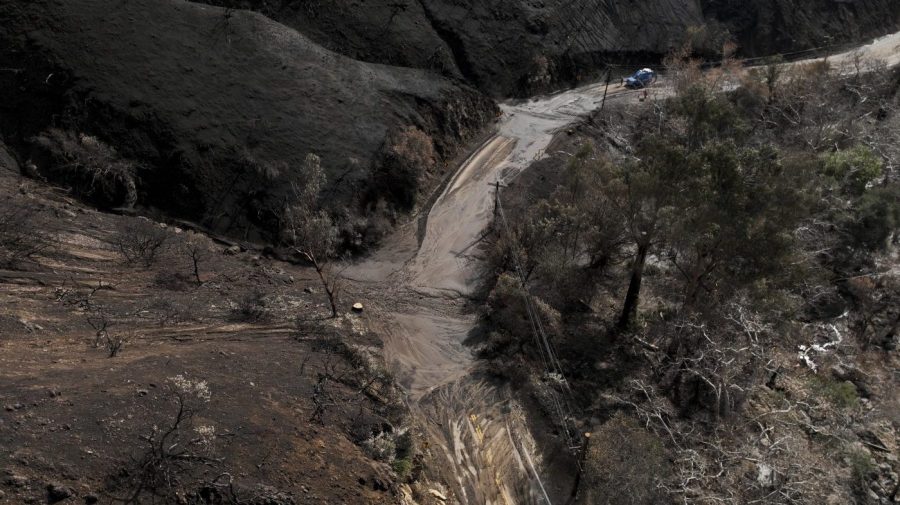
After multiple days of heavy rains provided Southern California with significant relief from a spate of catastrophic wildfires, experts are now warning of potential mudslides as debris flows run rampant.
Certain parts of the Los Angeles metropolitan region received more than an inch of rain over the course of three days, with the National Weather Service reporting 1.38 and 1.62 inches at the Santa Monica Pier and in part of the San Fernando Valley, respectively.
Meanwhile, as of Tuesday, the area’s three biggest blazes — the Palisades, Eaton and Huges fires — were all more than 95 percent contained, according to Cal Fire.
Yet although the welcome wet weather has now decreased the threat of new wildfires in Southern California, the threat of mudslides and flooding persists in the burn scars they left in their stead.
The California Department of Transportation on Monday announced closures in Topanga Canyon, cautioning drivers that “the recent fires increased risk of mudslides, flash floods and debris flows.”
Attributing the roadblocks to “mud and debris,” the agency included photos of a semi-truck awash in muddy rapids and surrounded by errant tree branches.
“When rain falls on a burn scar, the ground cannot effectively absorb water,” Jonathan Porter, chief meteorologist for AccuWeather, said in a statement. “Too much rain falling too quickly can send a dangerous mix of water, mud, ash, rocks, and debris sliding down hills and mountains.”
“Mudslides and debris flows will be a risk every time substantial rain falls in these burn scar areas for the rest of this winter and even into next winter,” Porter added.
With additional opportunities for precipitation occurring in the coming weeks, the threat of new fires may return by late spring or summer, Paul Pastelok, AccuWeather’s lead long-range expert warned.
“Two back-to-back winters with exceptional rainfall and mountain snow led to a surplus of vegetation growth,” Pastelok said.
That said, both Ventura and Los Angeles counties are still under severe to extreme drought conditions, according to the U.S. Drought Monitor.












